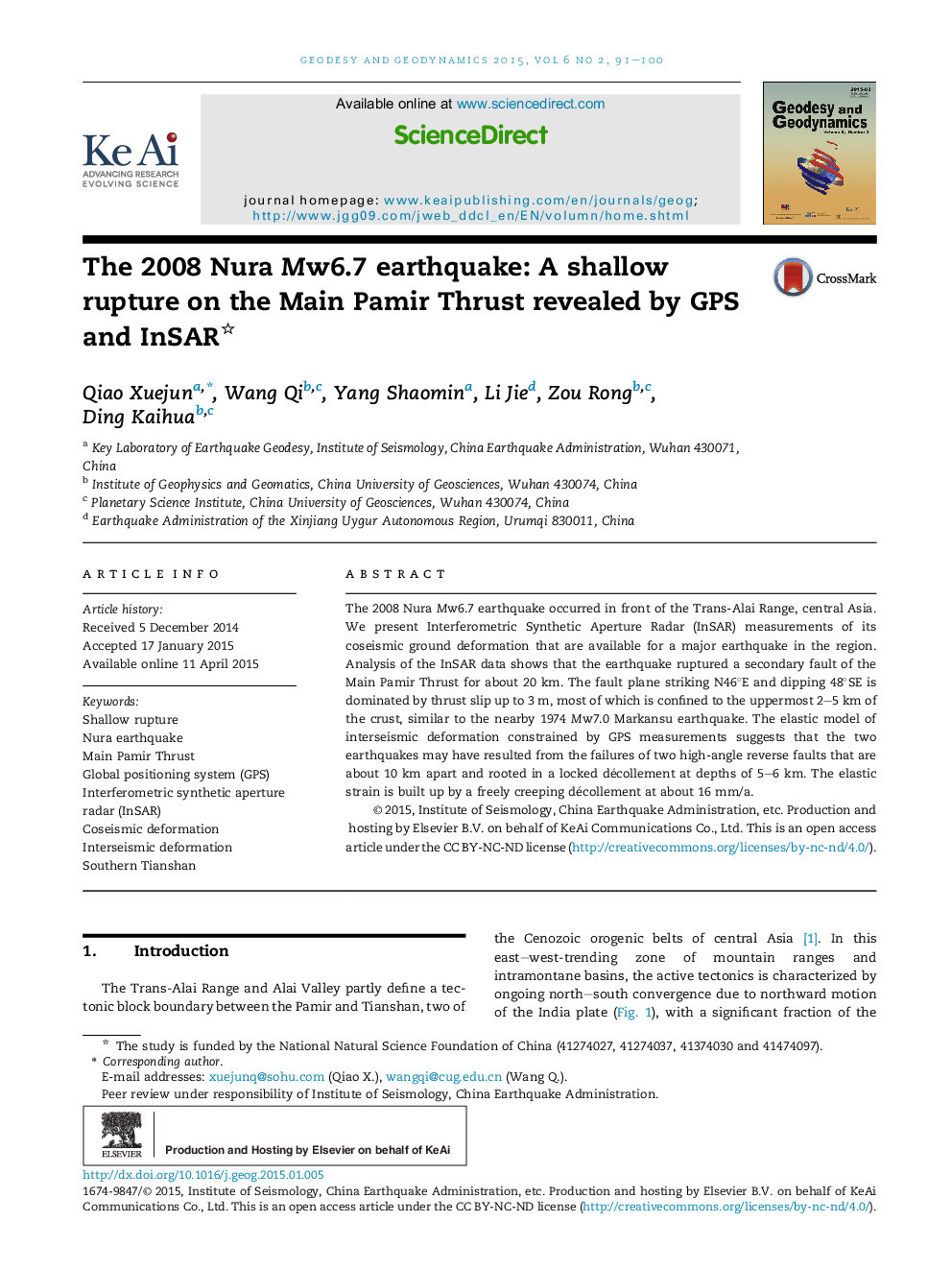| Article ID | Journal | Published Year | Pages | File Type |
|---|---|---|---|---|
| 4683501 | Geodesy and Geodynamics | 2015 | 10 Pages |
The 2008 Nura Mw6.7 earthquake occurred in front of the Trans-Alai Range, central Asia. We present Interferometric Synthetic Aperture Radar (InSAR) measurements of its coseismic ground deformation that are available for a major earthquake in the region. Analysis of the InSAR data shows that the earthquake ruptured a secondary fault of the Main Pamir Thrust for about 20 km. The fault plane striking N46°E and dipping 48°SE is dominated by thrust slip up to 3 m, most of which is confined to the uppermost 2–5 km of the crust, similar to the nearby 1974 Mw7.0 Markansu earthquake. The elastic model of interseismic deformation constrained by GPS measurements suggests that the two earthquakes may have resulted from the failures of two high-angle reverse faults that are about 10 km apart and rooted in a locked décollement at depths of 5–6 km. The elastic strain is built up by a freely creeping décollement at about 16 mm/a.
